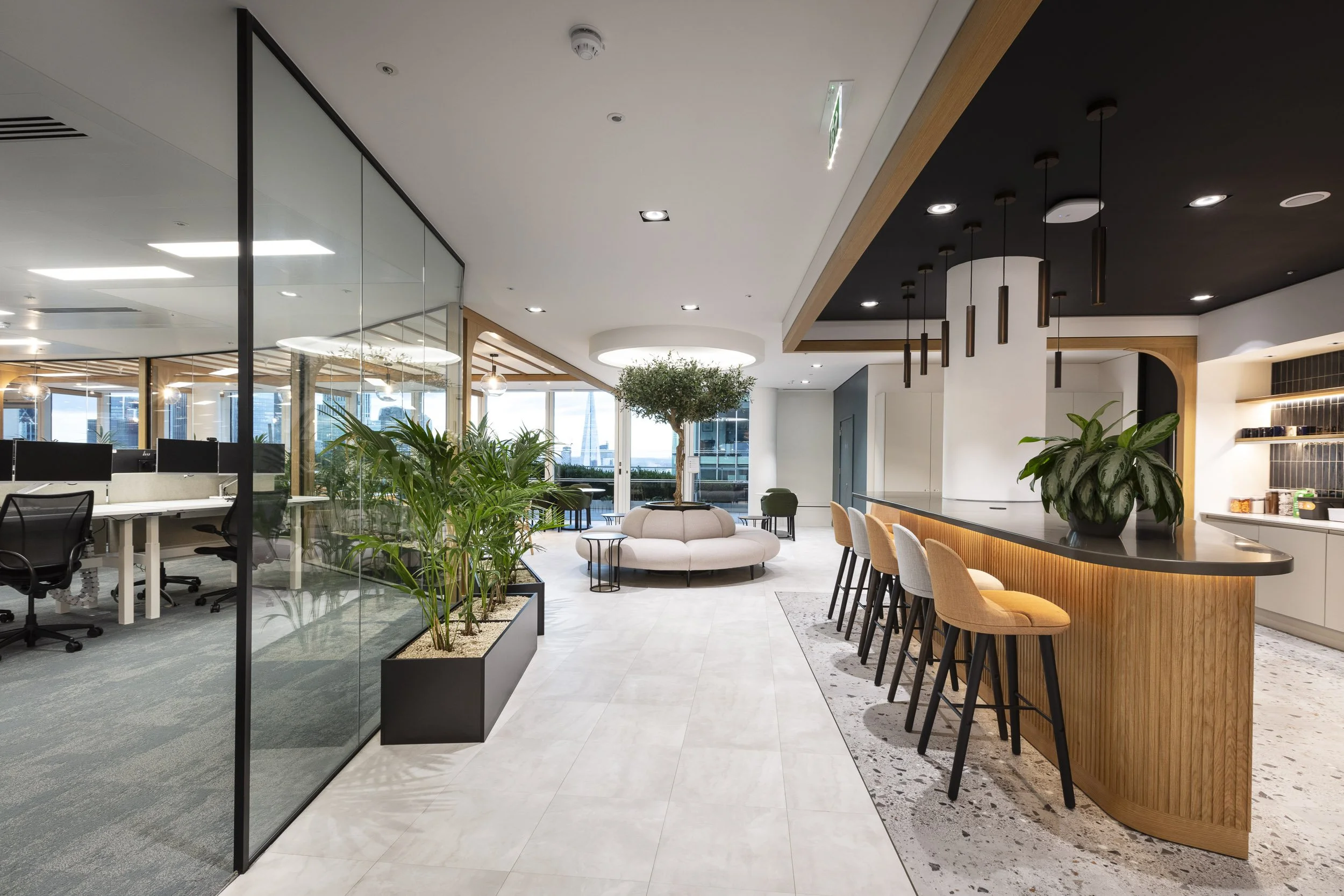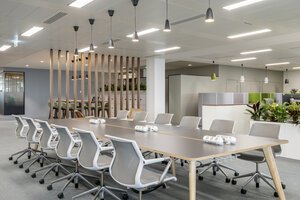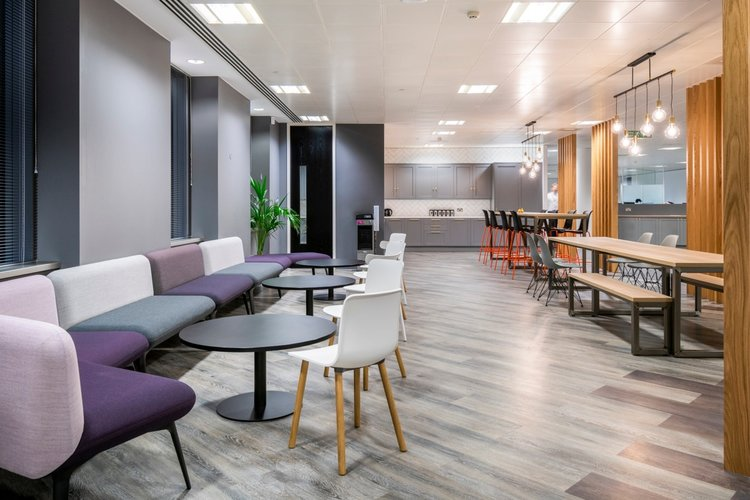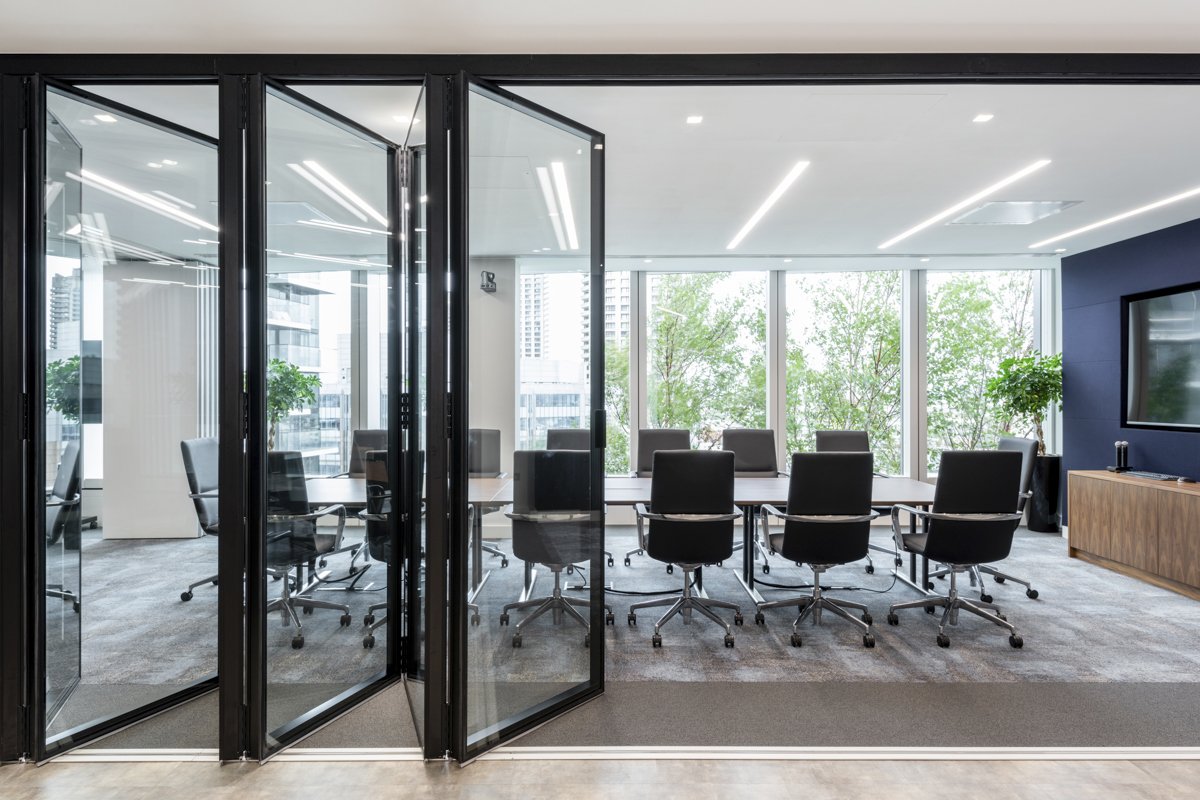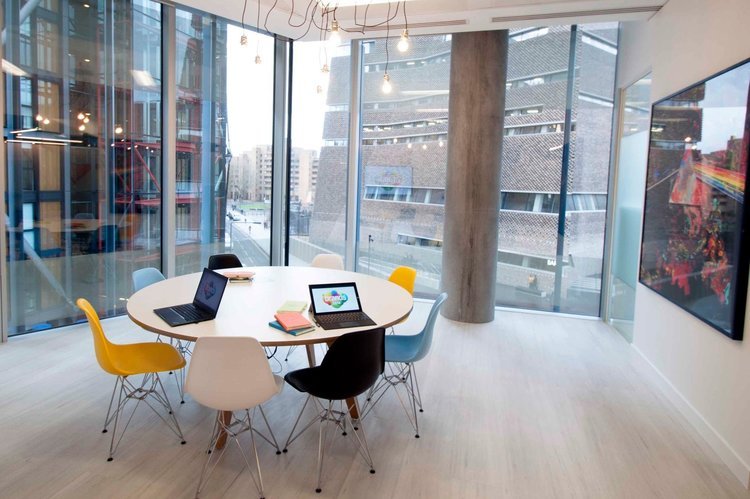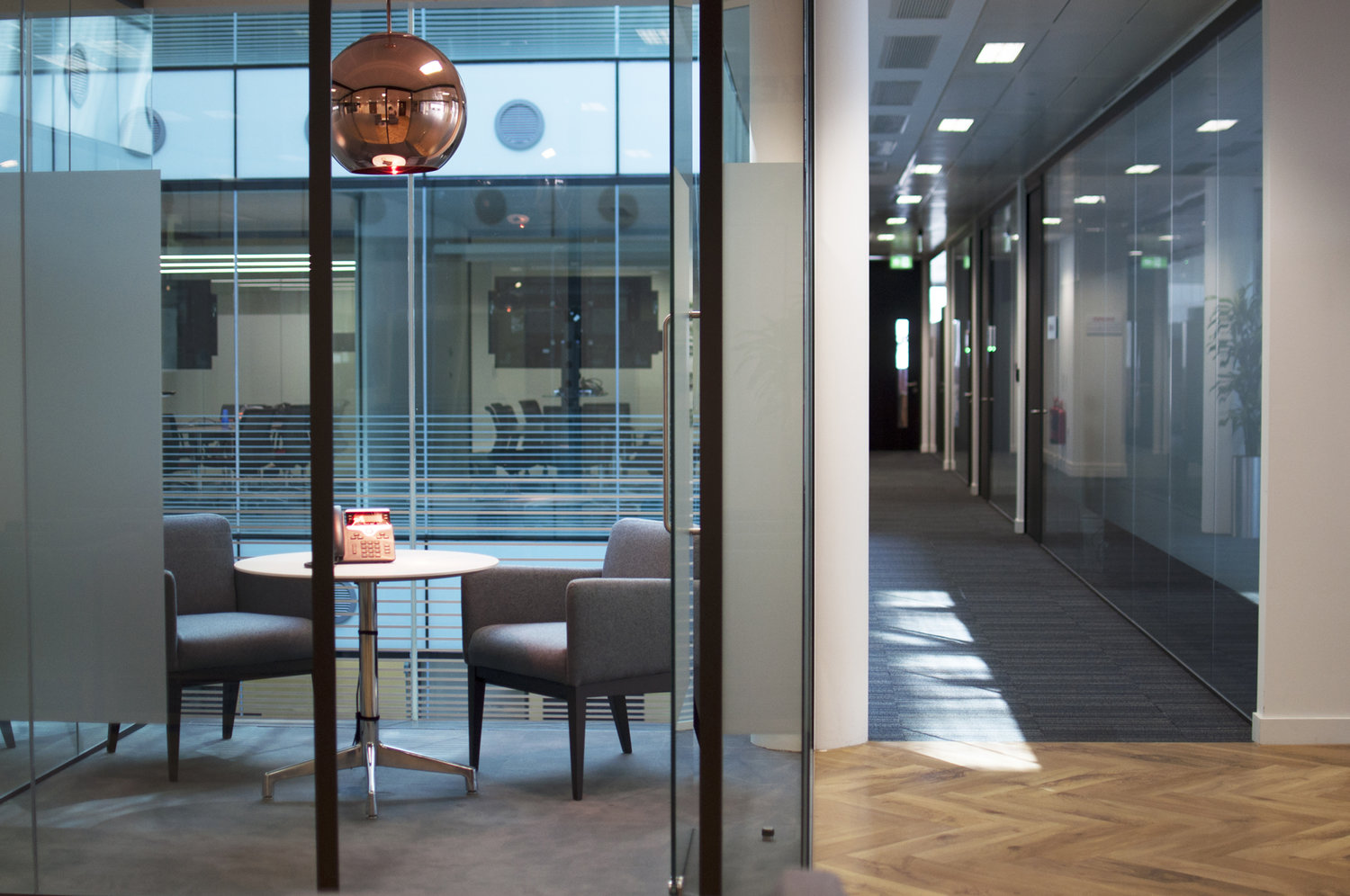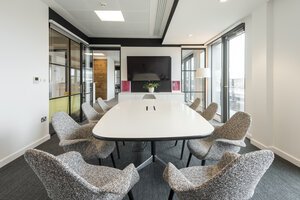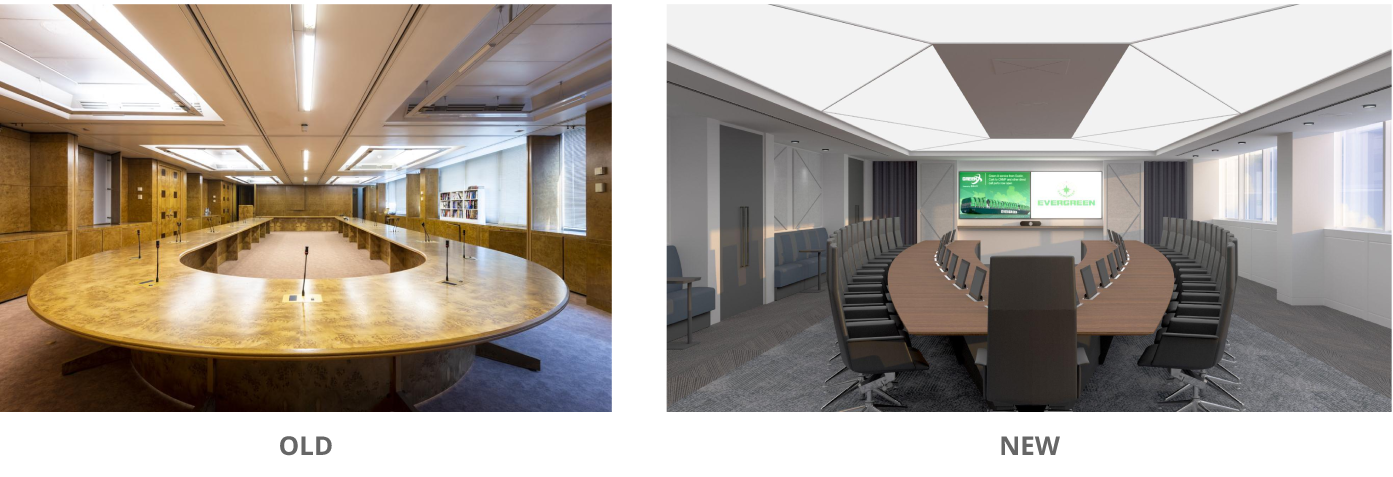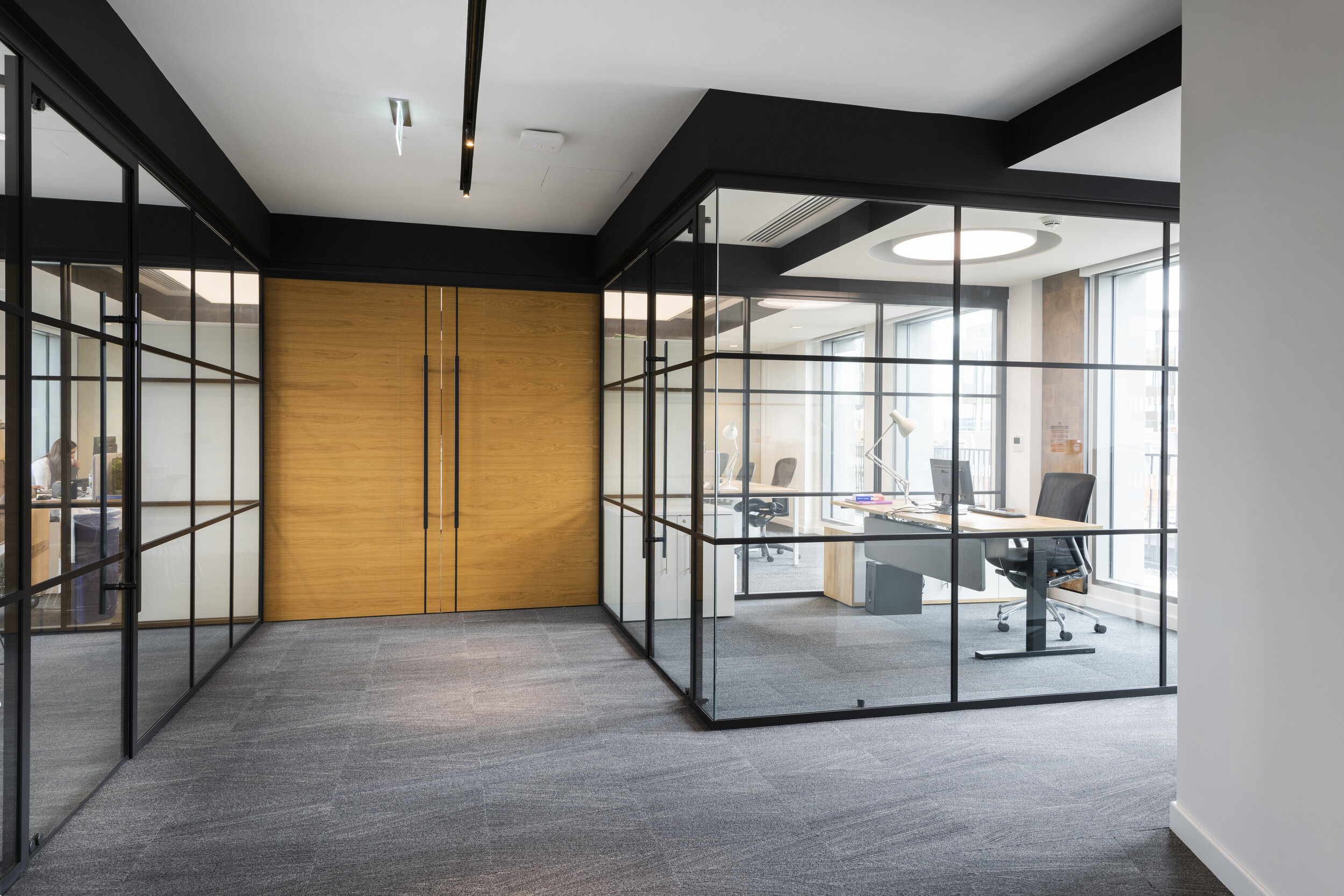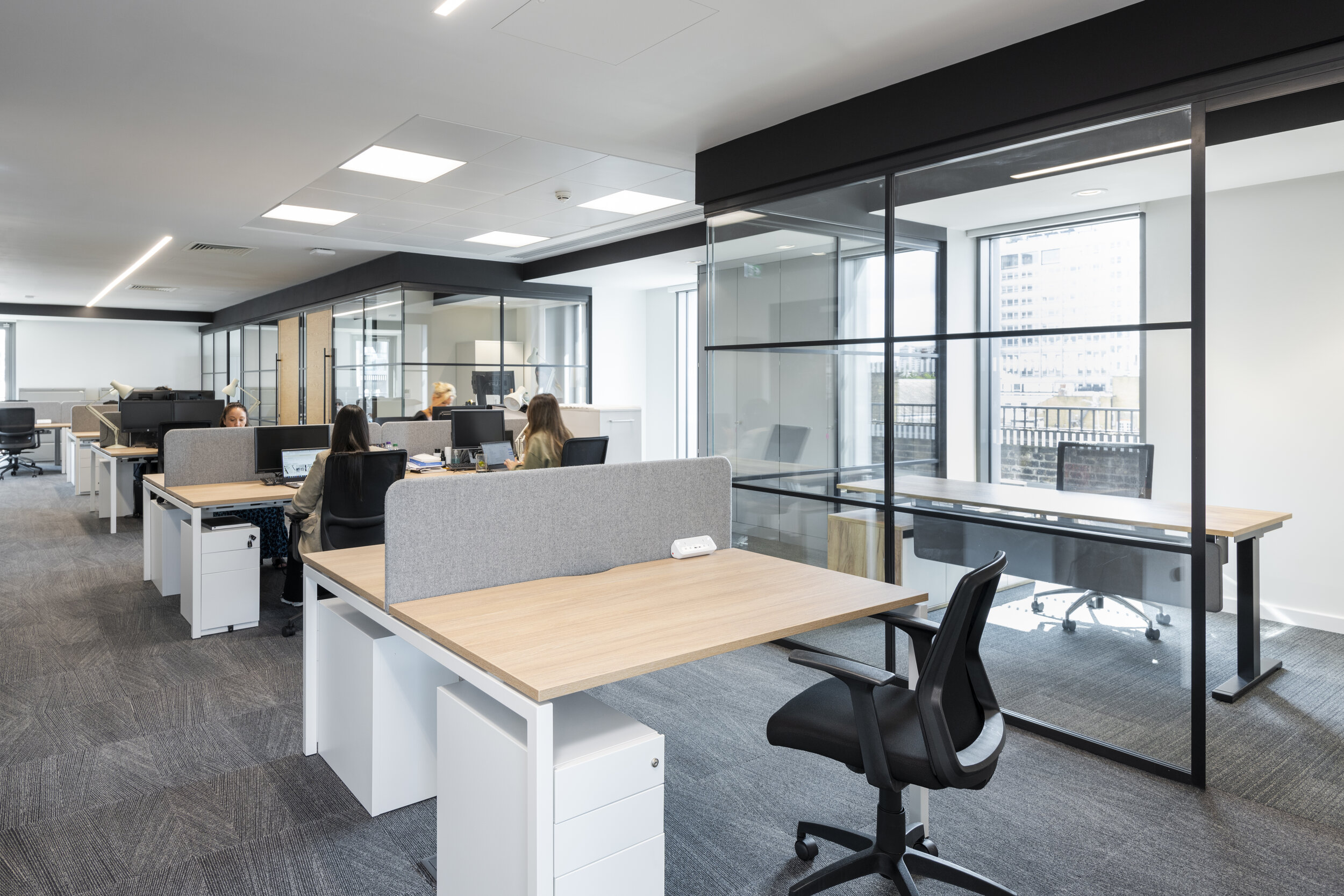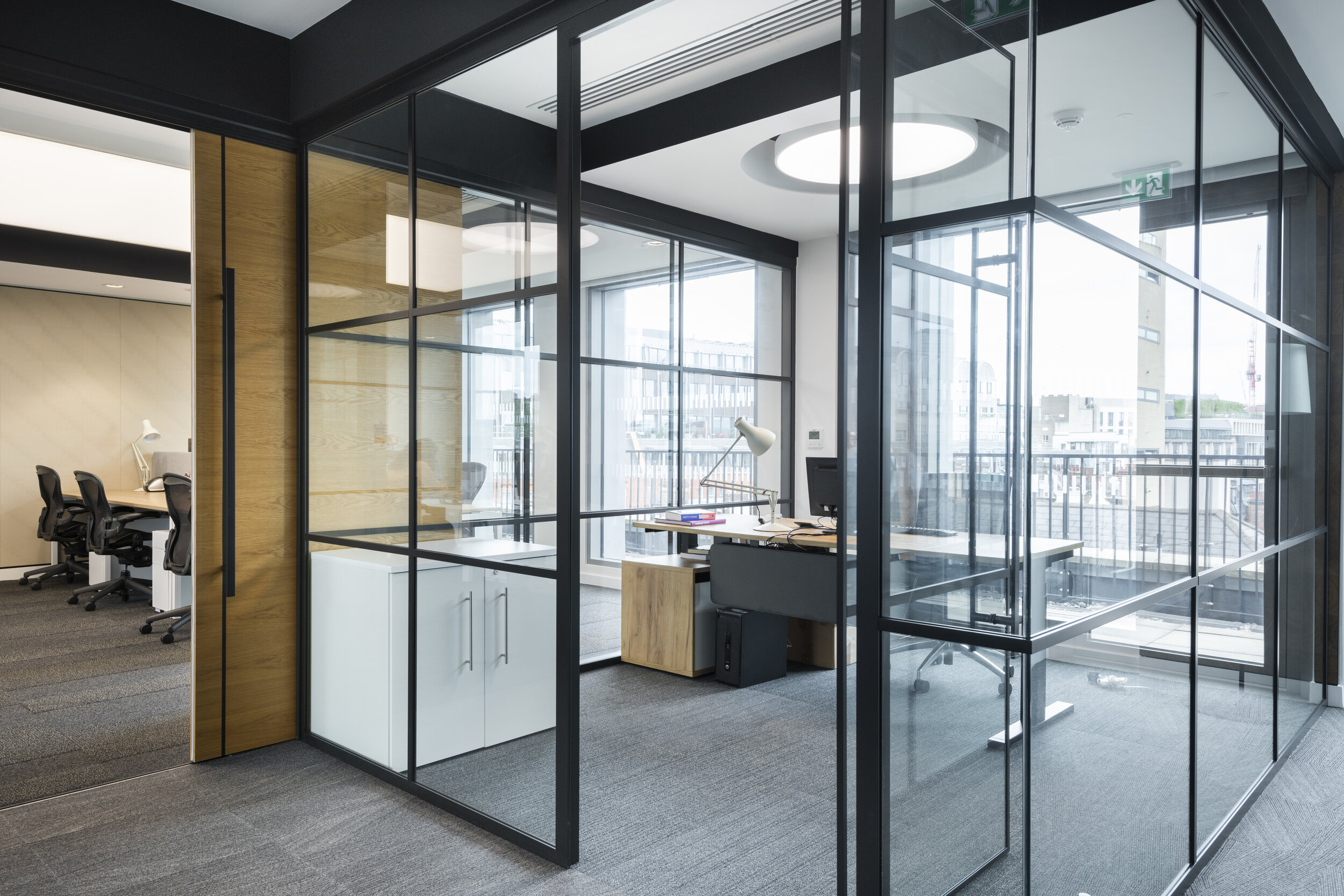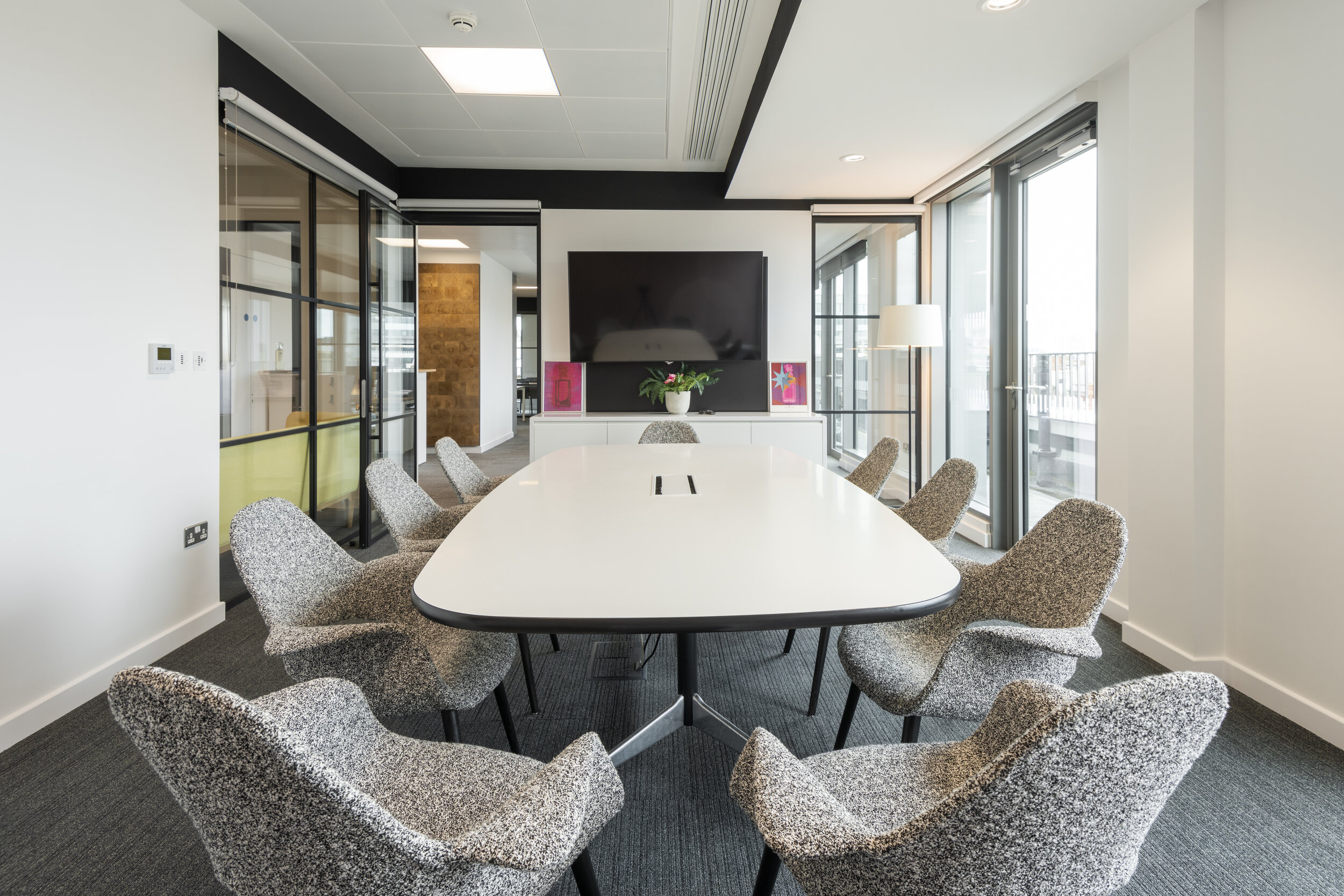Each year, World Mental Health Day invites us to consider how we can support employee wellbeing when we create work spaces for our clients. This year’s theme highlights the importance of ability to protect mental health in times of global instability.
In a constantly changing world, stress has quietly become a part of our daily rhythm. This World Mental Health Day, on 10th October, we’re exploring how you can help your people stay grounded in the workplace when everything else may seem uncertain. Here are four design principles, proven to improve wellbeing, that you can implement in your office today.
1. Prioritise natural light and air quality
Exposure to natural light is one of the simplest, most powerful ways to boost workplace wellbeing. Research shows that access to daylight can improve sleep quality, while good air circulation enhances cognitive performance.
What you can do: Place workstations close to windows where possible, choose light surfaces to maximise brightness and use air-purifying plants and proper ventilation to maintain good air quality.
For one client, a financial firm occupying lower ground floor with limited natural light, Cityspace overcame the design challenge by placing desks by the windows so that employees could take advantage of natural light. By using artificial lighting and warm, light colours on the walls, we were able to mimic sun shadows, creating a space that appears brighter.
2. Create calm through acoustic balance
Noise is one of the biggest daily stressors in modern offices. The right acoustics can dramatically reduce fatigue and overwhelm while working.
What you can do: Install soft furnishings like rugs and acoustic panels to help absorb sound, individual pods for focused work – or even audio technologies.
Take Raymond James, for example, where we installed discreet white noise systems in high-focus areas near social zones, blending background sounds into a single unobtrusive hum. Combined with strategically placed plants as sightline barriers, the space feels quiet and secluded, giving desk occupiers a sense of quiet, calm and focus regardless of any social activity happening in close proximity.
3. Bring nature indoors
Biophilic design isn’t just aesthetically pleasing – humans are hardwired to feel calmer when surrounded by natural material. Studies show that introducing greenery into workspaces can reduce stress and increase creativity.
What you can do: Opt for potted plants or consider a feature green wall.
As part of a 2024 fit out for Raymond James, we redesigned the small 20th-floor terrace at their Ropemaker Street office. To counter its weather-dependent use, we brought the outdoors in with a joinery pergola that appears double the size of the terrace’s width to the human eye. Plants, a tree and natural finishes complete the final continuation to the outside. The result is an indoor garden that feels calm, relaxing and can be used year round.
4. Design for connection
Human connection reduces stress. But so does autonomy. The most supportive workplaces give people both. Allowing your employees to choose where to work based on their task or energy is a powerful way of giving them control in a chaotic world.
What you can do: Implement activity-based working principles to allow for designated zones based on the type of work employees are doing: collaborative zones; quiet focus zones; social areas.
We kept this principle in mind when designing Emirates Holidays’ office, where the brief was to prioritise employee wellbeing, creating a designated kitchen breakout area that feels residential for out-of-hours staff.
Workplace wellbeing is about creating stability and a space that has been designed with you in mind. As uncertainty continues to shape the world around us, the workplaces that will stand out are the ones that put people first.
To learn about how Cityspace can help you incorporate some of these design principles into your office, email us for a no-obligation consultation now, or get in touch via form.



